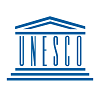Ebru is…
Ebru – is a dance of colors on the surface of water
Ebru – is a centuries-old tradition, passed down from generation to generation
Ebru – is enchantment and magic
Ebru – is meditation, creativity and beauty
Ebru – is singular experience, each painting as unique as a fingerprint
Ebru – captures the moment in which you, the paint, the universe and the water are one
Painting on surface of the water – a centuries old technique. India, China, Siberia, Turkestan, Persia, Pakistan, and even ancient Egypt lay claim to the title of her homeland. Perhaps it comes from the art of shamans, whose rituals are similar to the process of forming patterns on the surface of water. Perhaps it is from the Altai region, where marbled patterns were found, transferred to leather about 2,500 years ago. Or perhaps this technique was developed in the early regions of China, where paper making was established more than a dozen centuries ago and with it perhaps the origins of Ebru marbling.
Some of the best preserved early works of Ebru are found in the covers of early history books and albums. The oldest found work dates from the 11th century, but by this time Ebru techniques had already evolved and matured, including rules and guides, giving grounds to believe that Ebru is much older.
Ebru – painting on water, wrapped in mystery and secrets for centuries. The creator and the first Ebru print has long since been lost to time and may never be known. In our current understanding, Ebru is considered native Turkic, as the first known work was born in the territory of the traditional Turkestan region. Since the 1600’s, this marbling technique has been known as Ebru.
In its journey through Europe, Ebru techniques have changed, with many regions and countries contributing to the basic patterns, changing materials and formulas. Unfortunately, almost no documented information from early masters passed on their knowledge and secrets to successive generations. Even today, current masters may not have uncovered all of Ebru’s secrets discovered by unknown masters from generations past.
In the 1800s, Ebru became a preferred choice of lining by bookbinders. It was at this time a few books in English devoted their attention to the mysterious art that graced their inner covers.
Ever since the start of its journey to Italy and Spain, Ebru developed into the form in we know today. A new age of Ebru began in Italy, mainly in Venice and Florence. To this day, the Venetians, and the Florentines are known for producing some of the world’s finest Ebru examples.
Ebru continued its journey through France, Holland and England, and its migration continues. Every country, every province and every artist, with every drop of paint, bring something new to the art of Ebru, expanding its potential with different materials and techniques.
Today, Ebru masters skillfully transfer marbled works not only on paper but also on such surfaces as fabric, leather, wood, clay, ceramic and plaster products. Moreover, fashion designers from many different disciplines exploit the uniqueness of this art in their collections.
Each picture is a photograph of the moment in which you, the paint, the universe and the water exist together. Starting a conversation with water, one engages with the moment of the process, developing a more profound understanding of the world and of one’s self. The water itself, from the first attempt, becomes a mirrored surface, a barometer of the soul.
The art of Ebru is in a constant dance with its partner, the water, contributing to the ongoing changes in colors, shades and patterns. Observing, manipulating and participating in the process soothes the mind, the body and the soul. Ebru has the capacity to create a haven from the trials of everyday life. Ebru shares a sense of patience, calmness and harmony.
In the traditional art of Ebru, almost all materials used are natural and organic: water, dyes, rosewood, water thickening agents, ox gall and horse hair.
It is thanks to the close connection with nature that Ebru is a pure and relaxing process.
Regardless of skill level, or the intentions of the artist, Ebru is a deeply personal journey with the artist, materials, movement and time. Ebru is more than just an art form, it is the gathered knowledge, history and mysticism of a deep artistic and cultural journey.
Start your journey today!
Here are some examples of old Ebru art


